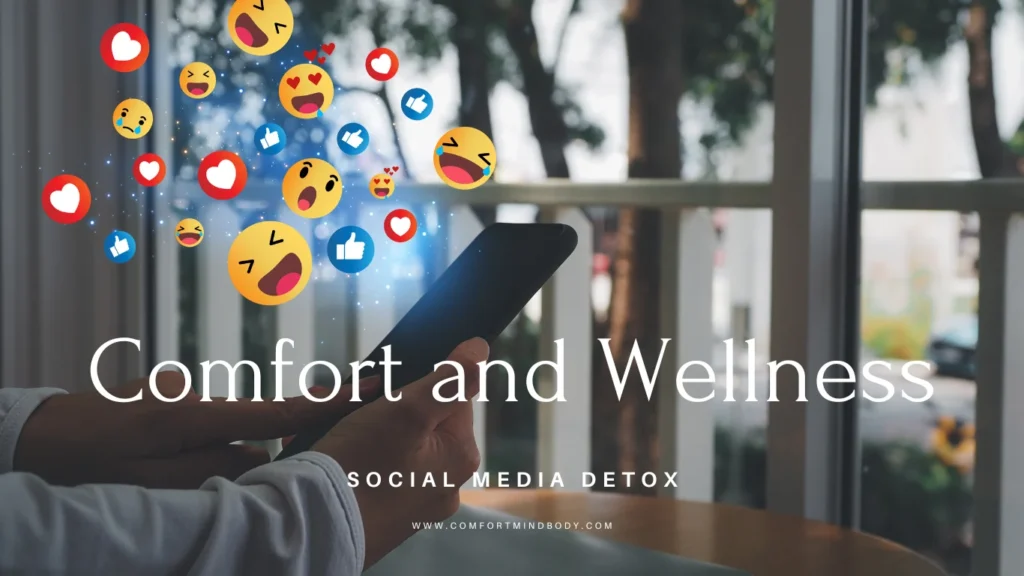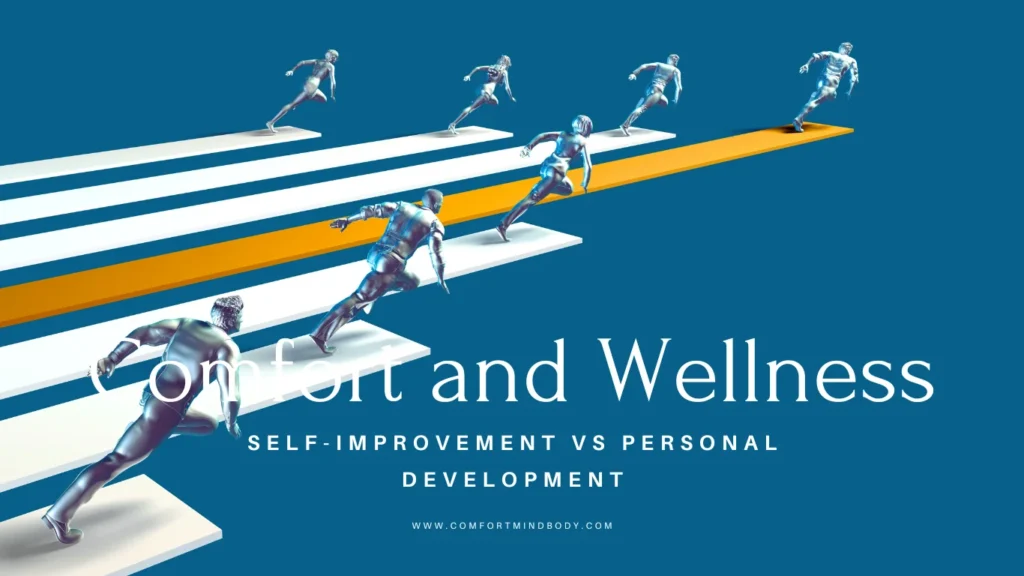Table of Contents
ToggleIntroduction:
Self-care has become a buzzword in recent years, and for a good reason. With the fast-paced world we live in, it’s important to take a step back and focus on ourselves. One aspect of self-care that often gets overlooked is our relationship with social media.
Social media is a good way to stay in touch with friends and family. However, it can also harm our mental health and well-being. In this guide to spring self-care, we will look at the benefits of a social media detox. We will also discuss how to do it and share tips for success.
What is a Social Media Detox?
A social media detox is a period of time where you take a break from using social media platforms. This includes all social media platforms such as Facebook, Instagram, Twitter, and TikTok.
The goal of a social media detox is to unplug from the noise of social media. This helps you focus on yourself. It’s important to note that a social media detox doesn’t have to be a complete break from technology. You can still use your phone for texting, calling, and other non-social media activities.
The Effects of Social Media on Mental Health and Well-Being
Social media has become a ubiquitous part of modern life. It’s a place where we can connect with friends and family, share our thoughts and feelings, and find information on just about anything.
However, research has shown that social media can have negative effects on our mental health and well-being. One study found that social media use was associated with increased feelings of anxiety, depression, and loneliness. Another study found that social media use was linked to decreased sleep quality and increased risk of insomnia.
Signs You Need a Social Media Detox
It can be challenging to recognize when we need a break from social media. After all, social media has become a part of our daily routines. However, there are some signs that you may need a social media detox.
If you often compare yourself to others on social media, you might feel anxious or stressed. If you feel the need to check your accounts often or spend too much time online, it may be time for a break.
How to Do a Digital Detox: Step-by-Step Guide
Doing a social media detox may seem daunting, but it doesn’t have to be. Here’s a step-by-step guide on how to do a digital detox:
Set a goal: Before you start your social media detox, it’s important to set a goal for yourself. You might choose a certain time to stay off social media or a specific goal to reach.
Plan your detox: Decide how long you want your social media detox to be and plan accordingly. Let your friends and family know that you’ll be taking a break from social media and remove any social media apps from your phone.
Fill your time: One challenge of a social media detox is finding ways to use the time you usually spend online. Plan activities that you enjoy, such as reading, exercising, or spending time outdoors.
Stay accountable: Find someone to hold you accountable during your social media detox. This could be a friend, family member, or even a support group.
Reflect on your experience: After your social media detox, take some time to reflect on your experience. Think about what you learned, how you felt, and whether you want to make any changes going forward.
Alternatives to Social Media: Productive Ways to Spend Your Time
One challenge of a social media detox is figuring out how to fill the time you usually spend online. Here are some alternatives to social media that can help you stay productive and engaged:
Read a book: Reading is a great way to relax and unwind. Choose a book you’ve been wanting to read and spend some time getting lost in a story.
Exercise: Exercise is a great way to boost your mood and improve your physical health. Try a new workout class or go for a run in the park.
Learn something new: Learning a new skill or hobby can be a great way to spend your time. Take an online course, learn a new language, or try a new recipe.
Spend time with loved ones. Use your break from social media to enjoy quality time with the people you care about. Plan a game night, go out for dinner, or take a weekend trip.
Tips to Make Your Social Media Detox Successful
Doing a social media detox can be challenging, but there are some tips that can help you stay on track:
Set realistic goals: It’s important to set realistic goals for your social media detox. Start with a short break and work your way up to longer periods of time.
Find support: Find someone to hold you accountable during your social media detox. This could be a friend, family member, or even a support group.
Stay busy: Fill your time with activities you enjoy. This will help you stay focused and engaged during your social media detox.
Reflect on your experience: Take some time to reflect on your experience after your social media detox. Think about what you learned, how you felt, and whether you want to make any changes going forward.
The Benefits of a Social Media Detox: Scientific Evidence and Personal Stories
There’s scientific evidence to support the benefits of a social media detox. One study found that taking a break from Facebook for just one week led to improvements in well-being and life satisfaction.
Another study found that reducing social media use led to decreased feelings of anxiety and depression. Personal stories also support the benefits of a social media detox. Many people report feeling more relaxed, focused, and present after taking a break from social media.
How to Detox From Your Phone: Tips and Tricks
A social media detox doesn’t have to be a complete break from technology. Here are some tips and tricks for detoxing from your phone:
Turn off notifications: Turn off notifications for social media apps on your phone. This will help you resist the urge to check your accounts constantly.
Set boundaries: Set boundaries for your phone use. For example, don’t use your phone during meals or after a certain time at night.
Use airplane mode: Use airplane mode during times when you don’t want to be disturbed. This could be during a workout, while you’re driving, or when you’re spending time with loved ones.
Try a phone-free day: Challenge yourself to go a full day without using your phone. Use this time to focus on yourself and your relationships with others.
Technology Cleanse: How to Do a Digital Detox on All Devices
A social media detox doesn’t have to be limited to just your phone. Here’s how to do a digital detox on all devices:
Unplug: Unplug all of your devices, including your phone, tablet, and computer. This will help you disconnect from the constant noise and distractions of technology.
Plan activities: Plan activities that don’t require technology. This could be reading, exercising, or spending time with loved ones.
Find support: Find someone to hold you accountable during your technology cleanse. This could be a friend, family member, or even a support group.
Reflect on your experience: After your technology cleanse, take some time to reflect on your experience. Think about what you learned, how you felt, and whether you want to make any changes going forward.

Courses and Programs for Digital Detoxing
If you’re struggling to do a social media detox on your own, there are courses and programs available to help. Here are some options to consider:
Digital Detox: This is a 30-day program that helps you break free from the distractions of technology and reconnect with the world around you.
The Social Media Detox: This is a 14-day program that helps you create healthy habits around social media use.
The Mindful Tech Program: This is a six-week program. It helps you build a more mindful relationship with technology.
Social Media Detox Challenges: How to Stay on Track
Doing a social media detox can be challenging, but there are some things you can do to stay on track:
Stay accountable: Find someone to hold you accountable during your social media detox. This could be a friend, family member, or even a support group.
Be kind to yourself. It is normal to have cravings and urges to check your social media during a detox. Be kind to yourself and remember why you started the detox in the first place.
Focus on the benefits. A social media detox can improve your well-being. It also gives you more time for activities you enjoy.
Conclusion:
Self-care is important for our mental health and well-being. Social media can help us stay connected with others. However, it can also harm our mental health.
Taking a break from social media through a social media detox can help us reconnect with ourselves and others. By using the tips in this guide to spring self-care, you can refresh your mind and body. This will help improve your overall well-being.
Disclosure: Please note that the links within this product review may generate a small commission. This compensation aids in supporting our research and editorial team. We wish to highlight that our recommendations solely pertain to high-quality products.
Disclaimer: This article serves purely informational purposes and is not intended for the diagnosis, treatment, or cure of any medical condition. Prior to making any changes to your diet or lifestyle or taking supplements, it is imperative to consult a qualified healthcare professional.




